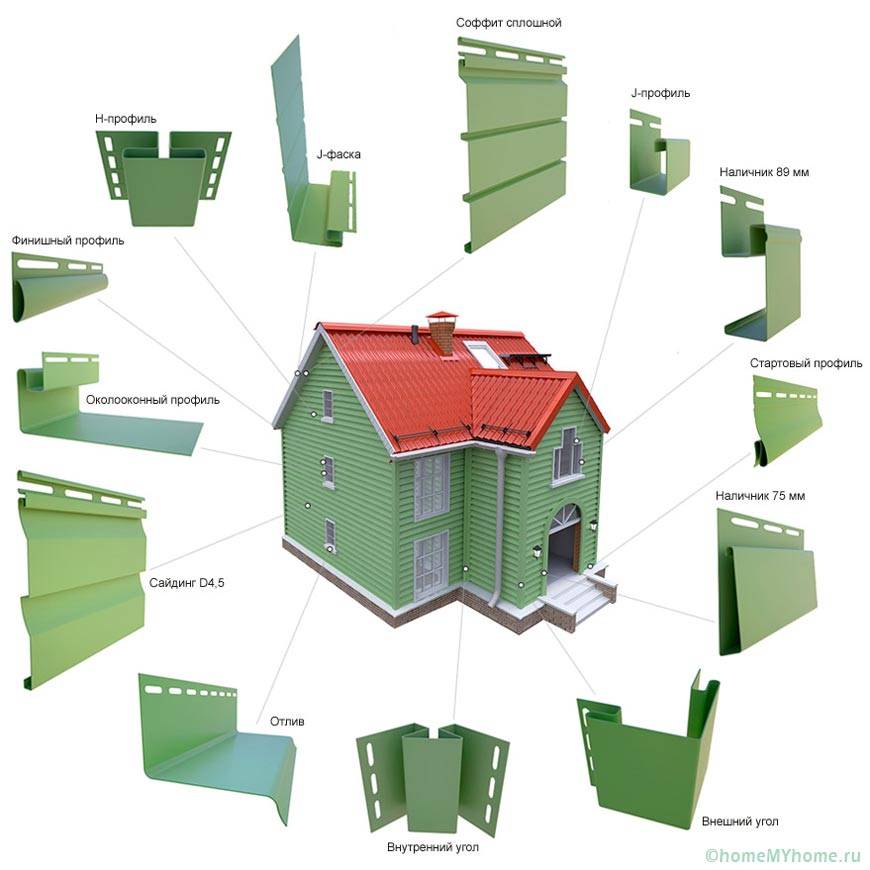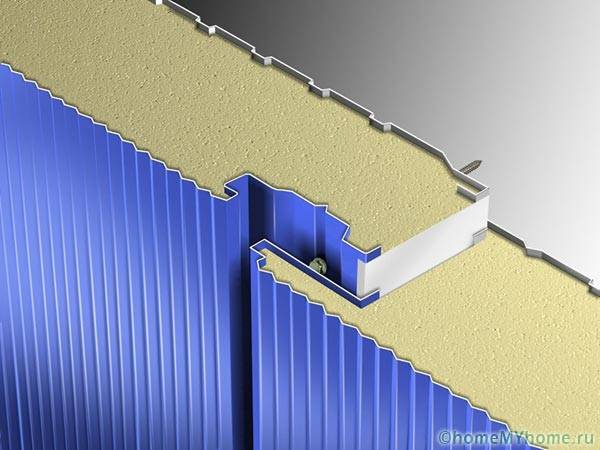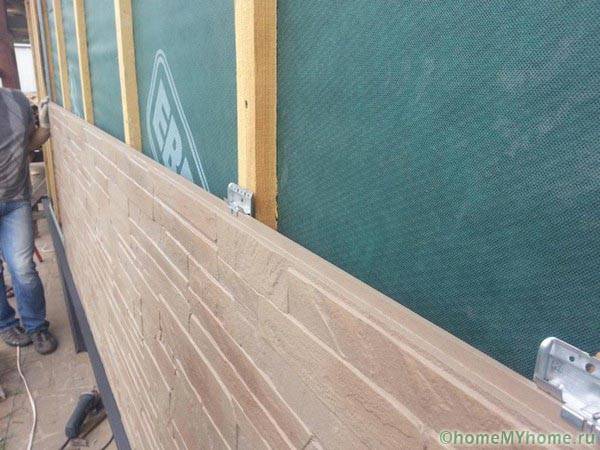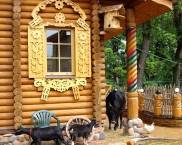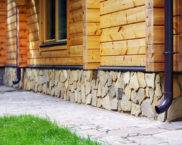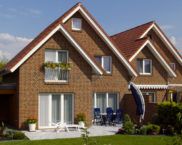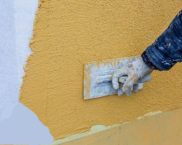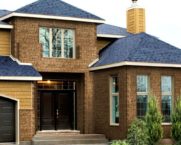Facade panels for exterior decoration of the house: an overview of the types
In the systems of ventilation facades, facade panels are used for exterior decoration of a house from different materials with an unequal format and methods of fastening individual elements to each other. They are hung on frames made of bar or galvanized profile, imitate natural wood, natural stone or facing brick.
The content of the article
Video: facade panels Termopan
Overview of species, characteristics, brands
Facade panels for exterior decoration of the house are classified according to several criteria:
- format - rectangle, narrow long bar, medium-sized module;
- front part - painted, imitation of the texture of stone, wood, brick;
- thermal insulation - thermal panels and sandwiches with built-in insulation, cladding without thermal insulation;
- fastening - locks, without fixing to each other;
- material - glass, metal, polymer, stone or composite.
If it is necessary to simultaneously insulate + decorate the facade, the subsystem (profile or bar) is attached to the wall with brackets after insulating its outer surface. This is necessary to eliminate cold bridges.
Helpful information! Laying basalt wool or extruded polystyrene foam inside the crate cells is a violation of technology. If only the improvement of the building exterior is required, the battens can be fixed directly to the building envelope without brackets.
Metal
There are facade panels made of aluminum, stainless steel, galvanized steel. Unlike budget linear panels used for finishing industrial buildings, sports complexes, siding, cassettes have a more noble look, lamination, 3D texture.
Even with double-sided coating with polymer materials, steel panels are subject to deformation, accumulate static electricity, and require thermal insulation. Aluminum is devoid of the last two drawbacks, but it costs much more.
Polymer
Of all the existing polymers, PVC (vinyl) is commonly used for exterior cladding. There are two types of vinyl facade panels for exterior home decoration:
- basement siding - rectangular modules measuring about 120 x 50 cm, imitating stone / brick;
- facade siding - long lamellas 300 - 381 cm, 18 - 26 cm wide (soffit up to 30.5 cm).
Manufacturers provide a wide range of additional elements that allow you to qualitatively decorate abutment nodes, cornices, ebbs, slopes of cottage openings.
Composite
The range of composite panels used for facade decoration is much wider:
- fiber cement - the filler is cellulose (up to 90%), which allows decorative embossing on the front surface;
- porcelain stoneware - slab sizes 1 x 1 m - 1.2 x 3.6 m, the material can be cut with a glass cutter, it is environmentally friendly, inert to solar ultraviolet light, household chemicals;
- aluminum composite - the price per square meter is from 1000 rubles, it is fastened with rivets, it can have a wave or a flat surface of the front side;
- clinker - has a layer of insulation, has a maximum operational resource, but unnecessarily loads the supporting structures.
Composite material is always more expensive, however, it has a high resource, original design.
Glass panels
Original translucent panels are laminated, reinforced or hardened, thus obtaining high vandal resistance or diaper penetration. This material has light / visual effects (opacity, dullness), usually used for finishing the lower floor of half-timbered houses.
Helpful information! Glass panes should not be confused with facade glazing systems. Finished enclosing structures are sheathed with these materials. They are not independent walls.
Sandwich
In private construction, prefabricated and monolithic sandwiches are rarely used. This material is structural, since when the polyurethane / expanded polystyrene foam is pressed between two profiled sheets of the plate, sufficient rigidity is obtained.
Sports complexes, hangars, warehouses are erected from them. Prefabricated sandwich buildings can be dismantled for transport to a new location.
Related article:
SIP panels: what is it? Why is this material so popular? What are its advantages? How much is a house made of SIP panels? More details in a separate review.
Features of installation, advantages and disadvantages
Facade fiber cement panels for exterior decoration of the house, the photo of which is presented above, are attached to the sub-system lathing with clamps, like most other claddings with a thickness of 16 - 25 mm.
For thin-walled decors, a riveter is used (only on a steel profile) or self-tapping screws, nails on bar battens.
Helpful information! Rigid fixation is allowed only for materials with low linear expansion. In other cases, it is necessary to ensure one degree of freedom with horizontal movements.
Thermal panels have a layer of insulation, which must be placed in the immediate vicinity of the wall. Therefore, they must be glued to the enclosing structures without an air gap. In sandwiches, a heat insulator is located between metal sheets, so they are used as a wall material.
Examples of facade design, tips, recommendations
A budget option for decorating the exterior of a cottage are plastic facade panels for the exterior of a house with an outer layer that imitates natural material.
To increase the resource of the ventilation facade, composite materials and metals are used.
Glass panels are usually used to decorate individual sections of the outer walls.
Japanese facade panels for the exterior of a house are called long decorative strips made of fiber cement (size 300 x 3.5 cm). They are produced in several versions:
- with decorative coating - laminate, textured painting or embossing;
- for coloring - the developer can choose the color, composition of paintwork materials, make patterns, zoning with different colors.
The main advantage of the panels is the correction of defects in the geometry of the building, the flatness of the walls, protection against destruction of the enclosing structures.
Thus, the owner of the property can choose the facade panels, taking into account the finishing budget, architecture, and the style of the building. At the same time, it is possible to insulate the walls from the outside, which is guaranteed to shift the dew point outward, relieve the inner walls from fogging.
Video: decorating a house with fiber cement board










